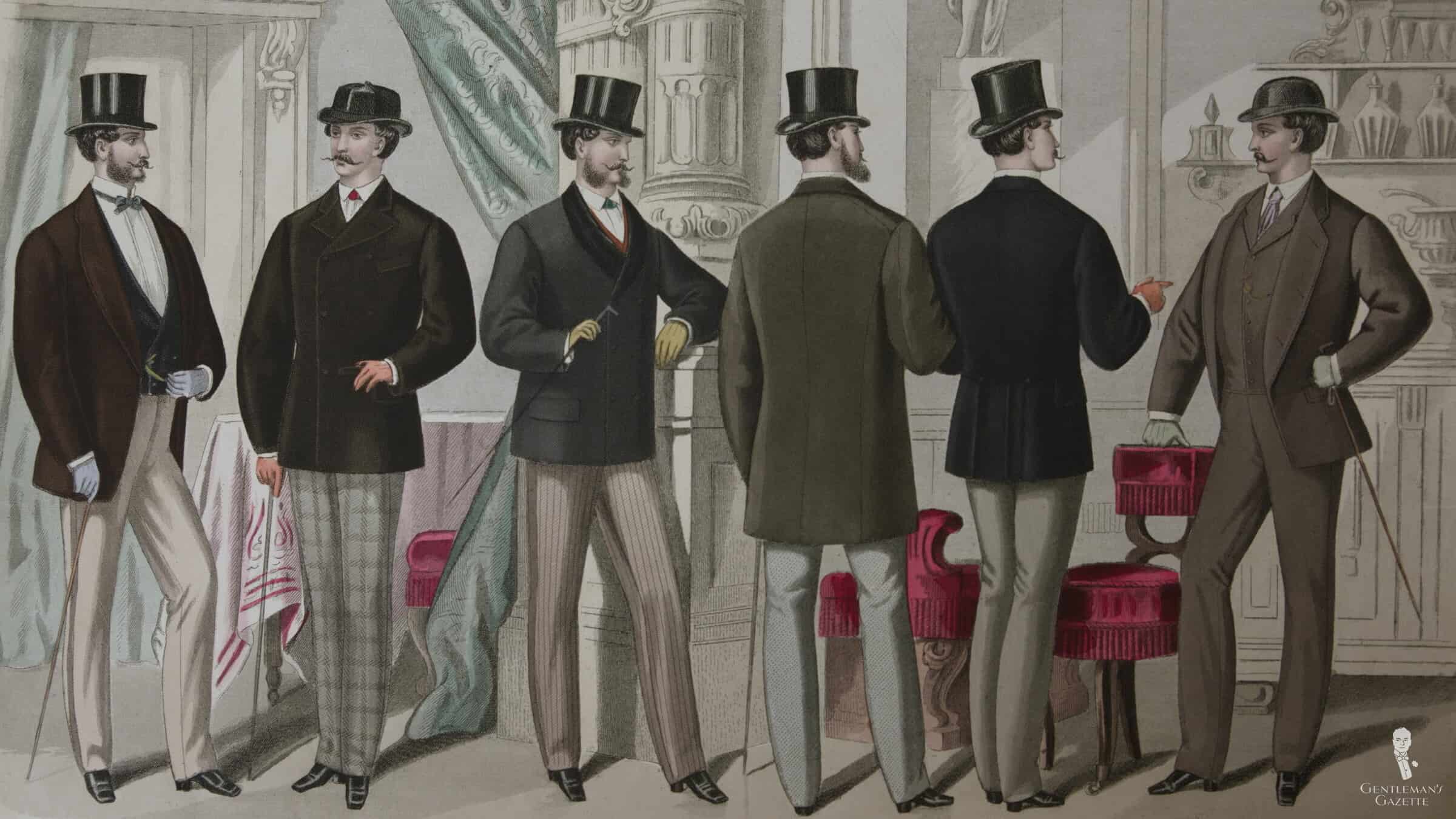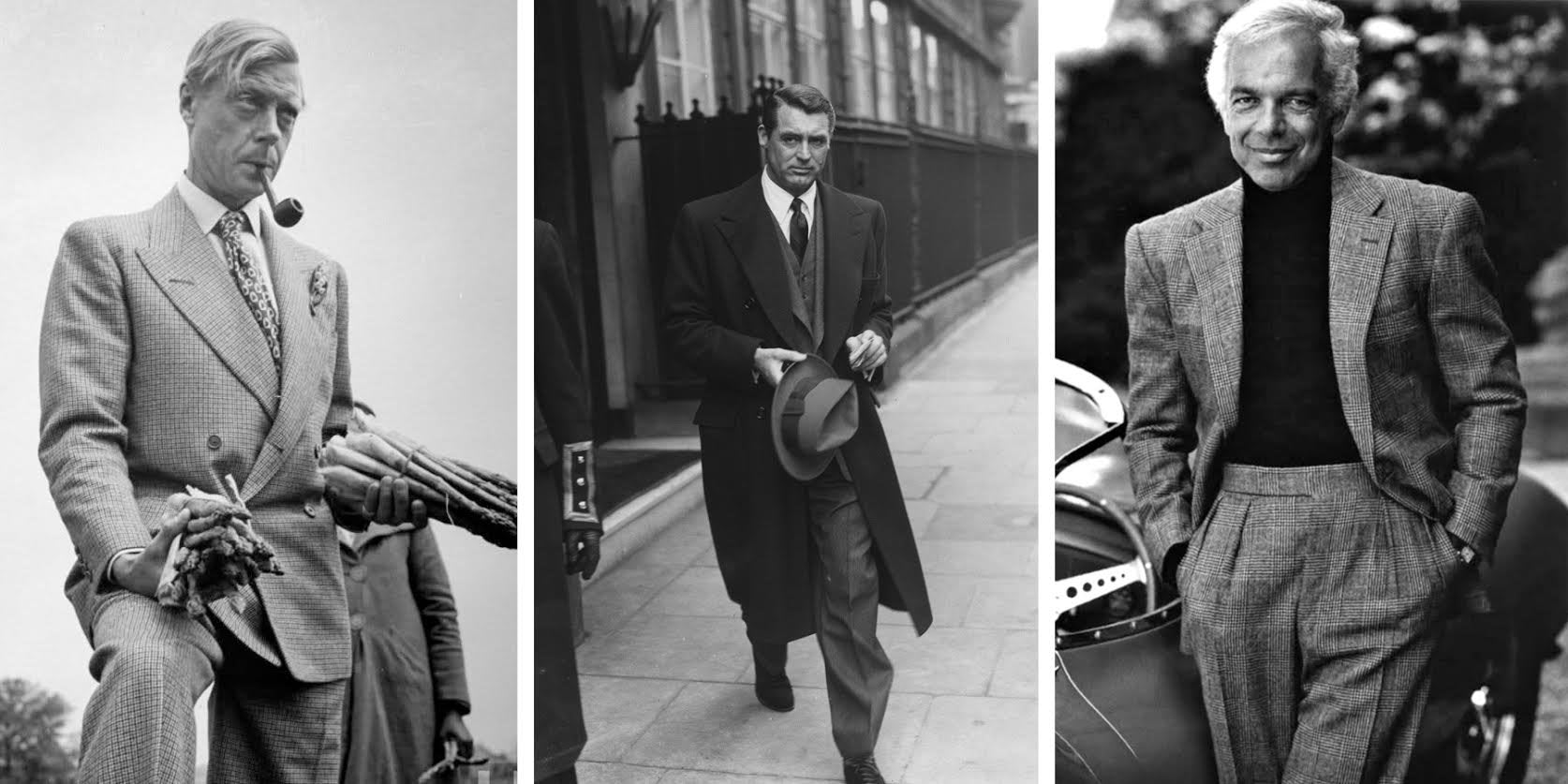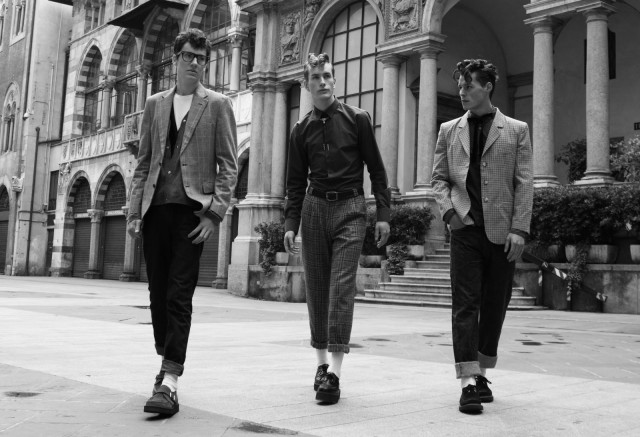History Of Men's Fashion: What the Well Outfitted

We've said it before: menswear is controlled by history and tradition. Menswear designers, stylists, and editors have all drawn inspiration from the past at some point. No period has been neglected.
As we continue to study the fundamentals of personal style, I thought we'd take a brief glance back at history of men's fashion throughout the previous century or so. Perhaps this will give some insight or perspective into how menswear evolves, and more significantly, how we can make educated purchases and build own style.
Iconic Moments in History of Men's Fashion
Late 1800s: The Last of the Victorians

As the nineteenth century drew to a close, men were gradually throwing off the Victorian influence that kept them wearing top hats, frock coats, and pocket watches while carrying walking sticks. This may seem to be an ornate and constraining way to dress, but it was a significant step forward when compared to the Georgian era, which included males wearing feathers, panty hose, and high heels. And you thought you were "dandy".
Read also: Elevating Your Everyday Style: A Guide to Men's Casual Wear
1900s: Tall, Long, and Lean

As the twentieth century began, men's clothes became more practical and severe. The late 1890s saw the continuation of the long, slender, and athletic shape, as well as tall, stiff collars. Three-piece suits were worn, which included a sack coat, matching waistcoat, and pants, as well as matching coat and waistcoat with contrasting trousers or matching coat and trousers with contrasting waistcoat. The newly created trouser press was used to create shorter trousers with "turn-ups" or "cuffs" and creases on the front and back.
Following the war, which provided timeless menswear patterns like trench coats and cargos, commerce increased and Americans had more money. With greater money, they were able to travel more and widen their cultural and artistic horizons. Many people crossed the Atlantic to England and France. Naturally, they returned with luggage full of the most recent fashion from abroad.
Of all the nations, England had the most impact on American clothing. In the 1920s, American college students started to put their own stamp on items worn at the famed Oxford University, such as button-down shirts, natural-shouldered coats, regimental ties, and colorful argyle socks. Furthermore, the Prince of Wales, subsequently known as the Duke of Windsor, was the world's most prominent and influential clothing figure. The graceful Prince became the first worldwide "style icon" via newsreels, newspapers, and magazines, and he was well recognized and respected for his flawless fashion sense. He was a true trendsetter for everyday people, and it was the first time in history that a celebrity face was used to sell apparel, shamelessly marketing their wares "as worn by the Prince".
1930S: THE HEIGHT OF ELEGANCE
The Great Depression occurred at the beginning of the 1930s. The average man could not afford to be involved in the world of fashion, but many delighted to admire the looks of those who could. Hollywood movies on the big screen serve as a source of inspiration for today's working-class man. Gabel, Cary Grant, Gary Cooper, Fred Astaire, and other well-dressed celebrities were idolized and looked up to by both men and women.
In the 1930s, American taste was at its pinnacle, rivaling that of any European nation. It was a period when American men took care in their dress and the image they presented. It was a period when men dressed according to certain norms of behavior and etiquette. This is when the "menswear rules" were created, which we often allude to.
"For the first time, American men recognized that clothes should not be worn to conceal the natural lines of the body, but rather to adhere to them, therefore accentuating the masculine physique. At the same time, clothing should not be too visible. They had to become a part of the guy wearing them. Clothing was not intended to distinguish people, as it had been for millennia with monarchs and noblemen, but rather to enable them to be themselves among others. Americans had finally learned that the purpose of decent clothes was to flatter rather than stand out." — Alan Flusser.
Read also: Wedding Suits For Men: What You Need To Know
1940s: The Birth of Ready-to-Wear

With the conclusion of World War II, American men departed from the high standards and fundamental principles of formal attire established in the 1930s. Changes in the workforce and a lack of formality in daily life were contributing factors. With reduced demand, the cost of bespoke tailoring increased, allowing mass-produced menswear to take over as the standard. During this time, mass-produced ready-to-wear apparel became available in America, and certain labels continue to sell garments to this day.
There were both advantages and disadvantages to these new technologies of mass manufacturing. On the one hand, basic apparel was more affordable and available than ever. However, big clothing manufacturers, like vehicle manufacturers, understood that delivering changes in trends every year or season might boost sales, leading to a lack of variation in styles. Clothing producers invented the "trend cycle" in retail to increase profits, and the magazine business followed suit.
Finally, this marketing technique moved the customer even farther away from the "ideals of classical dress" established in the 1930s, which were all about selecting long-term items that flatter the figure. Instead, the purpose of clothing retailers has been to confuse and urge the buyer to constantly "re-invent himself" by acquiring "new styles" that are "in fashion". This increases sales without regard for the durability or aesthetics of the appearance.
1950s: The Age of Conformity
The 1950s were the Age of Conformity. Young men returning from the military wanted to fit right in with the establishment. Fitting in and "looking the part" included adopting the Ivy League appearance, which was dominating menswear. Individuality in clothes design was an afterthought. The objective was to seem "part of the club" with a boxy sack suit, oxford shirt, rep tie, and shoes. This was a significant boost for mass Ready-to-Wear makers, who eagerly supplied the same ill-fitting tweed coats to every young guy attempting to seem sophisticated and employable.
Furthermore, the 1950s witnessed the debut of synthetic materials like as rayon and nylon. Clothing producers were able to save greatly on fabric costs while creating a garment that was "more durable and easiest to wash". As it turns out, synthetic material makes for horrible menswear clothing, particularly suiting. Natural fibers are usually preferable.
The time was characterized by conservative gray suits and simple accessories (hat, pocket square, cigarette, and martini) for almost everyone.
1960s: Rebellion and Individuality

The 1960s were a decade of turmoil and revolt against the system, as well as the conservatism that had dominated the 1950s. Clothing mirrored this changing mindset, particularly among young people who valued self-expression and uniqueness above traditional "rulebook" attire. The apparel industry recognized this new trend among young people and produced a wide range of designs. Stores offered greater choice than ever before. During the "anything goes" time, what you didn't wear was frequently more important than what you did wear.
It was also the first time that dads turned to their sons for counsel. The first time in history, mature men want to seem youthful and carefree. This movement, of course, pushed us farther away from the elegant guidelines set in the 1930s.
1970s: Disco Funk.
The early 1970s saw a continuation of the late 1960s hippy rebel fashion. For males, this included bell bottom jeans, tie dye shirts, and military surplus apparel. Men's most popular accessories in the early 1970s were handcrafted, including necklaces, headbands, and bracelets created from natural materials like wood, hemp, and leather.
Men started to wear fashionable three-piece suits (available in a dizzying array of colors) with broad lapels, wide-legged or flared trousers, and high-rise waistcoats. As the "disco funk" became popular, neckties became larger and bolder, and shirt collars got longer and more pointed.
1980s: Power Dressing.
In the 1980s, wide shoulders framing power ties and suspenders added a sense of seriousness. Bold colors and geometric patterns reflected a renewed national confidence, and businesses adopted power dressing, emphasizing costly apparel and showy accessories.
1990s: Baggy Business Casual
This may be the worst-dressed decade of all. The fashion of the 1990s marked the beginning of a massive transformation in the western world.This reignited the apathetic, anti-conformist attitude to fashion, resulting in the popularity of the casual chic style, which comprised T-shirts, damaged jeans, oversized sweatshirts, and sneakers. "Business Casual" also entered the language as corporate offices grew less formal, resulting in larger and uglier suits than before.
Also Checkout
- How Do A Tuxedo And A Suit Differ?
- Look Elegant In Tuxedo Dinner Jackets
- Menswear Street Style Trends From the Spring 2024
- The Most Vibrant Men's Summer Suit Ideas
2000s: Hip-Hop and European Tailoring.
In the new century, menswear was inspired by hip-hop culture for younger generations and European "slim fit" tailoring for older men. The suit ultimately began to shrink down as the "European cut" grew more popular in America, to the point that it became difficult to locate retailers that did not stock "slim fit". The internet enabled men to learn about menswear and share their ideas with other style lovers. We saw the creation of the first menswear blogs, with this one beginning in 2009.
2010s: The Evolution of Style Online
In the 2010s, we saw the emergence of the "fashion star".Fashion blogs have gone mainstream. Fashion has been more accessible to the public, resulting in a diverse range of styles, critiques, and opinions. On the other hand, individuals who are being observed are naturally driven to work more and harder to stand out from the throng. "Peacocking" became a menswear phrase meaning "trying too hard" in the early part of the decade, although men have typically gotten more comfortable with modest, sophisticated fashion.
This time also saw the growing use of internet purchasing. Style fans all around the globe now have more access to brands than ever before, all from the comfort of their own homes. The internet also enabled more start-up companies than ever before, which were promoted via social media and financed via online platforms such as Kickstarter. In some ways, we're seeing a resurgence of the tiny brand, propelled by the power of the internet and customers' demand for something unique and special. The nicest aspect is that middle guys are being cut out every day. Designers may now offer their items directly to customers, challenging department stores' dominance in the sector.
Finally, my aim for the future of menswear is that we may return to the standards of classic clothing set in the 1930s while progressively incorporating personal ideas. To choose the perfect style for you, consider your body type, lifestyle, personality, and other factors. It changes throughout time, but you shouldn't have to buy a new outfit every season. The idea is to add well-made things to a lifelong collection of attractive pieces that appropriately display and reflect the wearer. At Articles of Style, we prioritize quality over quantity and encourage smart selections to create a timeless wardrobe.
FAQ's
What is the traditional clothing in America?
Middle Times. Knights would dress in matching tunics and hoses throughout the Middle Ages, which is when the men's suit first appeared. These tunics were intended to provide protection on the battlefield and were often constructed of bulky fabrics.
What is the history of men's dress?
Traditional clothes for guys can be traced back to the times of old civilizations. For example, men in ancient Greece wore tunics and cloaks, and Roman troops wore wool clothes that were very different from other soldiers. Different parts of the world have developed their own native clothing styles over time.
Why did men's fashion change in the 1920s?
The emergence of criminals like Peaky Blinders, as well as different European fashions, influenced 1920s men's fashion significantly. While many guys continued to wear sophisticated, fitted suits, the decade witnessed an increase in diversified dress, ranging from leisure wear to athletics.
What was men's fashion like in the 1900S?
Three-piece suits were worn, which included a sack coat, matching waistcoat, and pants, as well as matching coat and waistcoat with contrasting trousers or matching coat and trousers with contrasting waistcoat.
What are the 5 trends for men in the 1920s?
During the 1920s, men wore tuxedos, well-tailored pinstripe suits, raccoon fur coats, silk shirts, handkerchiefs, black patent leather shoes, spats, and bow ties.
